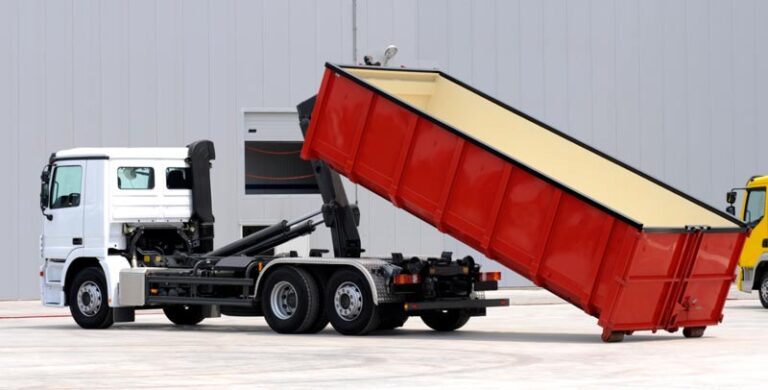Securing a load on the rear of any vehicle should be the primary concern for any road user. From securing a passenger with a seat belt in a car to transporting a load on an HGV, load security is of utmost importance.
There are two key reasons that load security is so important:
- If a load is not secured and it falls in to the road it presents an accident risk to all road users.
- A well secured load should arrive at its destination undamaged and be unloaded safely, therefore protecting workforce safety and a business’s profitability.
We recommend that all HGV drivers, transport managers and licence holders take the time to check they’re up to speed on the essential elements of loading regulations and load security. If you’re involved in HGV loading and load security in any way, this article is for you.
Load Security
In 2013 the DVSA issued over 2,000 prohibitions to vehicles which presented a road safety risk because of how their load was secured.
During the same period 22,000 road impact incidents in England and Wales were caused by objects falling from vehicles (source: DVSA Load Securing: vehicle operator guidance). These incidents will have included deaths as well as serious injury, not to mention costly repairs, delays on the road network and in some cases fines and penalties.
The Road Traffic Act 1991 introduced provisions into the Road Traffic Act 1988 of a new offence regarding the condition and quality of loads on a vehicle, highlighting just how serious the issue is.
With the implementation of simple measures, including people remembering to use good old fashioned common sense, load security should be straight forward.
Workplace transport is widely considered to be one of the highest risk activities, and with so many HGVs travelling on our road network every day, we have two questions:
- Do you know what load securing systems you should use for your vehicles?
- Do you know how to use them and load your vehicles safely?
Load Securing
There are no excuses for any vehicle to be poorly loaded. Any load securing system should be appropriate for both the load and the vehicle type. You must always consider factors such as axle type, load type and vehicle stability.
It is critically important that your cargo has been loaded safely and is secured to the vehicle before setting out on your journey. It is also vital that you schedule checks throughout your journey to ensure that your load remains safe all the way to its destination.
Within the transport chain (the loading, delivery and unloading of goods) there are three main roles: consignor, operator and driver. In a few cases, one person may fulfil all these roles, however this is rare. There must be clear communication throughout the transport chain to ensure that everyone involved understands the load that is being carried, how to load and unload it and what to do if the load shifts during transit. Everyone has important roles and responsibilities.
HGV Load Handling Roles and responsibilities
Load handlers must also be able to safely load and unload goods without the risk of falling goods.
A good manager will ensure that his staff are well trained in correct loading and unloading techniques and in securing loads – from basic skills such as using the right knots to tie lashings down to the importance of using load securing systems appropriately.
Drivers and loading assistants should also undergo training on emergency procedures when loads shift, driving style and vehicle configuration.
For further information about roles and responsibilities around load security, watch this video.
HGV loading methods and restraints
Any load restraints must be checked to ensure that they are in good working order and that the correct restraint is used for the correct load.
The anchorage points on a vehicle’s chassis should always be used wherever possible as they provide the greatest load security. Bulking equipment such as headboards, bulkheads, spigots, transverse beams and shoring bars should be used to give additional security to a load. Friction between the load and the platform of the vehicle also provides further load security.
The following video demonstrates the three main load securing methods of blocking, locking and lashing.
Load Security: Blocking
Blocking is the primary method of securing loads to a vehicle, where the load is secured in close contact with the fixed structures of the vehicle to eliminate sliding and tipping. Blocks should be used to ensure items within the load are packed tightly together and cannot move around.
Load Security: Locking
Locking is the term used for when the load is securely attached to the vehicle structure itself. Twist locks are usually fitted to the loading platform.
Load Security: Lashing
Lashings must be secured to anchor points that are attached to the vehicle chassis and must conform to published European safety standards. This document issued by the DVSA gives comprehensive guidance for vehicle operators about load security.
When loading a vehicle, the load should always be tightly packed before applying restraints. There should be no risk of anything being released during transit under normal driving conditions (including sudden braking). If one restraint fails others should still hold the load secure.
Any unused restraints must be stored away securely at all times so that they do not fall and pose a risk to the driver or other road users.
Curtain Side Truck Load Security and EN 12642-XL
In most cases the curtains on curtain sided vehicles must not be used for load security – they are purely there to protect the load from the weather.
However curtain sided vehicles that conform to EN 12642-XL are now permitted to carry loads without additional lashings if certain conditions are met.
Hauliers of vehicles that conform to this standard will be issued with a certificate that guarantees that the bodywork design has been tested and meets a minimum structural strength.
It is accepted that vehicles built to meet standard EN 12642-XL provide 50% of load security to the side as long as the load is a “positive fit” as per the DfT code of practice.
Hauliers need to remember that to count as a positive fit, a load must be tightly packed with no gaps, be the full length of the trailer with a maximum gap of 150mm to the rear doors and a maximum gap of 80mm from each curtain. Should these requirements not be met additional load restraints must be used.
How to Safely Secure an HGV Load (Videos)
These useful videos contain further information on good practice concerning HGV loading and load security. There is also basic guidance about how to use lashings and ratchet straps. Viewers are often surprised by how much they discover from watching these – no matter how long you’ve been in the industry there’s always something to learn!
Load security: good practice
How to use ratchet straps
Different load types will require different equipment and load security techniques but one fact that always applies is that every load should be securely restrained to ensure nothing moves at all until the load is ready to be (safely) unloaded.
DVSA load security regulations and enforcement
The DVSA has updated its guidance on load security in recognition of the catastrophic consequences that can occur if a load is not properly secured to a vehicle. An insecure load is a breach of the requirement to maintain a vehicle in a fit and serviceable condition.
Both the DVSA and police cam impose roadside prohibitions and penalties depending on the type of load and the nature of load restraint that is being used.
If a vehicle’s load security is found to be in breach of regulations a road transport operator may be called to a Traffic Commissioner Public Inquiry. This could lead to regulatory action such as the loss of an operator’s licence or its suspension.
What constitutes an offence?
Under section 40A of the Road Traffic Act 1988 it is an offence to use a vehicle or trailer on the road if it involves a danger of injury to any person.
The weight, position, or distribution of a load or how it is secured would constitute a breach of the regulations if a load is insecure. It is likely to become a danger by falling from the vehicle or by causing the vehicle not to operate as it should.
Any offence concerning load security may be caused by not only the driver but anyone involved in the business. Everyone has a responsibility to make sure that they don’t cause or allow an accident involving a load to happen.
Penalties for Insecure HGV Load
For goods vehicles there is no longer a maximum penalty charge where load security is concerned. A driver may be awarded three penalty points and if the offence is repeated within three years, it will lead to an obligatory driving ban.
If the operator of the vehicle is prosecuted and they are a sole trader or partner in a business they will also receive three penalty points.
Prosecution is also possible under section 42 of the Road Traffic Act 1988 with a maximum fine of £2,500 for goods vehicles but this time without any driving licence endorsements.
Load Security Enforcement
DVSA examiners may carry out roadworthiness inspections at the roadside. They will be looking for the answers to four key questions:
- Can the load slide forwards or backwards?
- Can the load slide sideways?
- Topple over or fall, or make it unstable?
- Are there any loose items that could fall?
Examiners will look at the types of restraint used and the condition of the restraints. They should be given as much information as possible about the load and how it is secured to help them carry out their roadside inspection.
Where a load docket is available it should be shared with the DVSA examiner. This document should include information on what the load is, the weight of the load and how it is secured.
The examiner will make a decision about whether the vehicle and load is safe or not. If is isn’t safe a prohibition notice will be issued to the driver along with a graduated fixed penalty notice. The vehicle must not be moved until the load is made safe. If it can’t be secured properly the vehicle may be impounded.
The following video explains the role of DVSA examiners in more detail.




